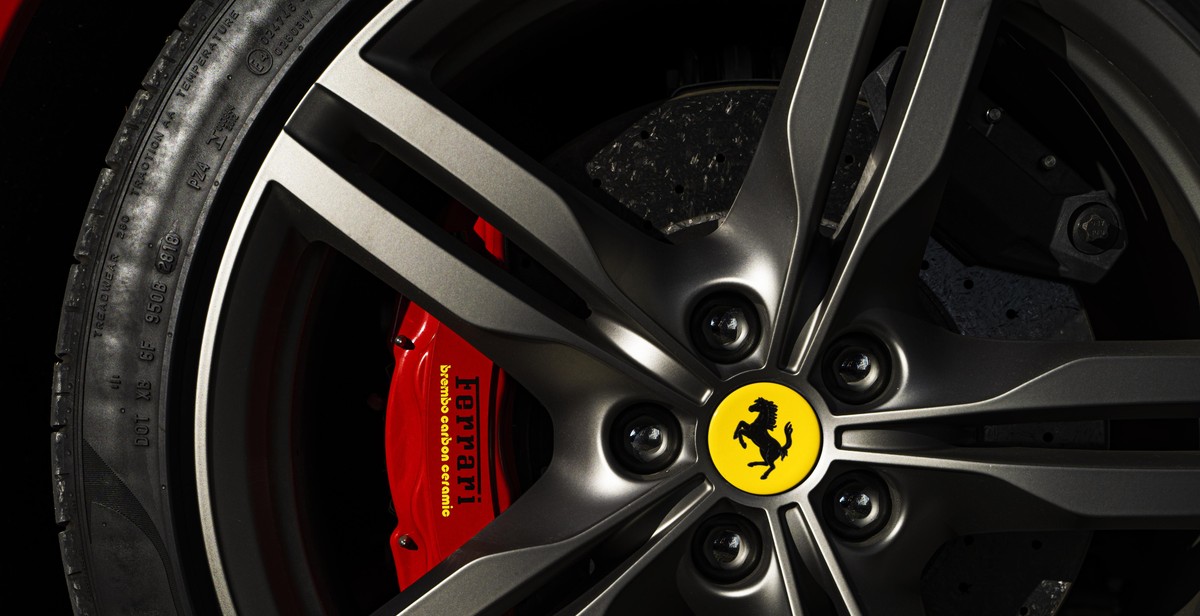How to Troubleshoot Common Car Problems
As a car owner, it’s crucial to know how to troubleshoot common car problems. Whether it’s a simple issue like a dead battery or a more complex problem like an engine malfunction, being able to identify and fix the problem can save you time and money in the long run.
Common Car Problems
Some of the most common car problems include:
- Dead battery
- Flat tire
- Engine overheating
- Brake failure
- Transmission issues
While these problems can be frustrating, they are often easy to diagnose and fix with the right tools and knowledge.
How to Troubleshoot Car Problems
When faced with a car problem, it’s important to stay calm and follow these steps:
- Identify the problem
- Check for common causes
- Consult your car manual
- Use diagnostic tools
- Seek professional help if necessary
By following these steps, you can quickly and efficiently troubleshoot common car problems and get back on the road in no time.
Engine Problems
Engines are the heart of every car, and when they malfunction, it can be frustrating and stressful. Here are some of the common engine problems and how to troubleshoot them.
Car Won’t Start
One of the most frustrating engine problems is when your car won’t start. This could be due to a variety of reasons, including a dead battery, faulty starter motor, or a bad alternator. To troubleshoot this issue, start by checking the battery terminals for corrosion or loose connections. If the battery is fine, try jump-starting the car. If it still won’t start, the starter motor or alternator may need to be replaced.
Engine Misfires
An engine misfire occurs when one or more cylinders in your engine fail to ignite properly. This can cause your car to run rough, idle poorly, and even stall. A misfire can be caused by a variety of reasons, including a faulty spark plug, clogged fuel injector, or a vacuum leak. To troubleshoot this issue, start by checking the spark plugs and replacing any that are worn or damaged. If the problem persists, take your car to a mechanic for further diagnosis.
Overheating
Overheating is a common engine problem that can be caused by a variety of reasons, including a faulty radiator, water pump, or thermostat. When your engine overheats, it can cause serious damage to your car, so it’s important to address this issue promptly. To troubleshoot this issue, start by checking the coolant level and ensuring there are no leaks. If the coolant level is fine, check the thermostat and water pump for proper function. If the problem persists, take your car to a mechanic for further diagnosis.
| Problem | Cause | Troubleshooting |
|---|---|---|
| Car Won’t Start | Dead battery, faulty starter motor, or bad alternator | Check battery terminals, jump-start car, replace starter motor or alternator if necessary |
| Engine Misfires | Faulty spark plug, clogged fuel injector, or vacuum leak | Check spark plugs, replace any that are worn or damaged, take car to mechanic for further diagnosis if problem persists |
| Overheating | Faulty radiator, water pump, or thermostat | Check coolant level and for leaks, check thermostat and water pump for proper function, take car to mechanic for further diagnosis if problem persists |

Transmission Problems
Slipping Gears
One of the most common transmission problems is slipping gears. This occurs when the gears in the transmission do not engage properly, causing the engine to rev without the vehicle moving forward at the expected speed. Slipping gears can be caused by a variety of issues, including low transmission fluid levels, worn or damaged clutch plates, or a faulty solenoid. If you notice that your vehicle is slipping gears, it is important to have it inspected by a qualified mechanic as soon as possible.
Delayed Engagement
Another common transmission problem is delayed engagement. This occurs when you shift your vehicle into gear, but it takes a few seconds for the transmission to engage and the vehicle to start moving. Delayed engagement can be caused by a variety of issues, including low transmission fluid levels, a faulty solenoid, or worn or damaged clutch plates. If you experience delayed engagement, it is important to have your vehicle inspected by a qualified mechanic to determine the cause of the problem.
Transmission Fluid Leaks
Transmission fluid leaks can also cause problems with your vehicle’s transmission. Leaks can occur for a variety of reasons, including worn or damaged seals, loose bolts, or a cracked transmission pan. If you notice red or brown fluid leaking from your vehicle, it is important to have it inspected by a qualified mechanic as soon as possible. Driving with low transmission fluid levels can cause serious damage to your vehicle’s transmission and lead to costly repairs.
- If you notice any of these transmission problems, it is important to have your vehicle inspected by a qualified mechanic as soon as possible.
- Ignoring transmission problems can lead to more serious issues and costly repairs down the road.
- Regular maintenance and fluid checks can help prevent transmission problems from occurring.
By staying aware of these common transmission problems and having your vehicle inspected regularly, you can help ensure that your vehicle’s transmission stays in good working order for years to come.

Brake Problems
Brakes are one of the most crucial components of your car. If you experience any issues with your brakes, it’s important to address them immediately. Here are some of the most common brake problems:
Squeaking or Grinding Noise
If you hear a high-pitched squeaking or grinding noise when you apply the brakes, it could be a sign that your brake pads are worn out. Brake pads are designed to wear down over time, but if they wear down too much, it can cause damage to your rotors. To avoid costly repairs, it’s important to replace your brake pads as soon as you notice any unusual noises.
Soft or Spongy Pedal
If your brake pedal feels soft or spongy when you press down on it, it could be a sign of a problem with your brake fluid. Brake fluid is responsible for transferring the force from the brake pedal to the brake calipers. If there is air or moisture in the brake lines, it can cause the pedal to feel soft or spongy. This can be dangerous as it may take longer for your car to come to a stop. It’s important to have your brake fluid checked and flushed regularly to avoid this problem.
Vibration While Braking
If you feel a vibration in the steering wheel or brake pedal when you apply the brakes, it could be a sign of warped rotors. Rotors are the metal discs that the brake pads clamp down on to stop your car. Over time, they can become warped due to heat and friction. This can cause uneven wear on your brake pads and decrease the effectiveness of your brakes. If you notice any vibrations while braking, it’s important to have your rotors inspected and replaced if necessary.
- Always pay attention to any unusual noises or sensations while driving.
- Regularly check your brake fluid level and have it flushed as recommended by your car’s manufacturer.
- Replace your brake pads and rotors as soon as you notice any signs of wear.
By addressing brake problems early on, you can ensure the safety and reliability of your car for years to come.

Electrical Problems
Electrical problems are some of the most common issues drivers face with their cars. Here are some of the most common electrical problems you might encounter:
Dead Battery
A dead battery is one of the most common electrical problems drivers face. Symptoms of a dead battery include dimming headlights, a slow engine crank, or no start at all. If your battery is dead, you can jump-start it with jumper cables and another car, or you can replace it entirely.
How to Jump-Start a Dead Battery:
- Park the car with the good battery next to the car with the dead battery, but do not let the cars touch.
- Connect the red jumper cable to the positive terminal of the dead battery.
- Connect the other end of the red jumper cable to the positive terminal of the good battery.
- Connect the black jumper cable to the negative terminal of the good battery.
- Connect the other end of the black jumper cable to an unpainted metal surface on the car with the dead battery, away from the battery and the engine.
- Start the car with the good battery and let it run for a few minutes.
- Try to start the car with the dead battery. If it does not start, wait a few more minutes and try again.
Faulty Alternator
The alternator is responsible for charging the battery and powering the electrical system while the engine is running. A faulty alternator can cause the battery to die, dimming headlights, and other electrical problems. If your alternator is faulty, you may need to replace it.
Malfunctioning Starter
The starter is responsible for turning the engine over when you turn the key in the ignition. A malfunctioning starter can cause the engine to crank slowly or not at all. If your starter is not working properly, you may need to replace it.
Conclusion
As a car owner, it’s essential to know how to troubleshoot common car problems. Not only does this save you time and money, but it also ensures your safety on the road. By following the steps outlined in this article, you can diagnose and fix most issues that arise with your vehicle.
Remember these tips:
- Pay attention to warning signs like strange noises, smells, or warning lights on your dashboard.
- Regularly maintain your car by checking fluids, tire pressure, and brakes.
- Use a diagnostic tool to identify error codes and pinpoint the problem.
- Don’t be afraid to seek professional help if you’re unsure or uncomfortable with fixing the problem yourself.
Remember, prevention is always better than cure, so it’s essential to stay on top of your car’s maintenance to prevent problems from occurring in the first place. By taking care of your vehicle, you can extend its lifespan and ensure it runs smoothly for years to come.
| Problem | Solution |
|---|---|
| Dead battery | Jumpstart or replace the battery. |
| Flat tire | Change the tire or call for roadside assistance. |
| Overheating engine | Turn off the engine and let it cool down, add coolant, or check for leaks. |
| Check engine light | Identify the error code using a diagnostic tool and fix the underlying issue. |
By following these troubleshooting tips and staying on top of your car’s maintenance, you can ensure your vehicle stays in top shape and avoid costly repairs down the road.
